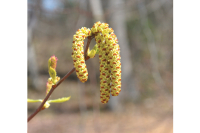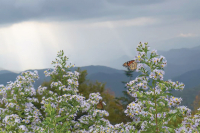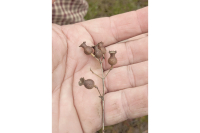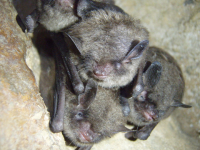The untold story: Smokies seeks to showcase history of African-Americans in the park
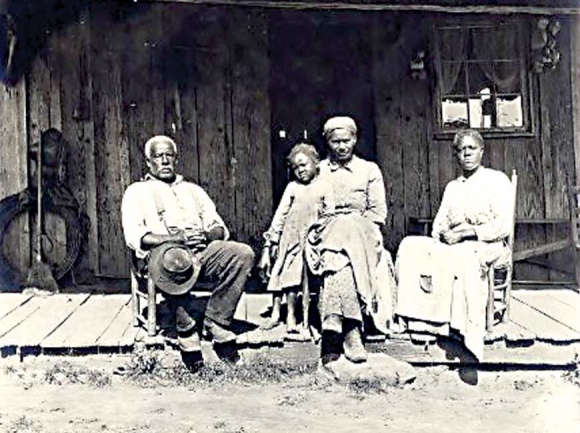 In a photo taken between 1890 and 1903, an African-American family sits on a front porch in the Great Smokies region. W.O. Garner Photograph Collection
In a photo taken between 1890 and 1903, an African-American family sits on a front porch in the Great Smokies region. W.O. Garner Photograph Collection
Many plotlines weave through the story of the Great Smoky Mountains National Park, but if the park were a book, some of those plotlines be written in bold, with others buried in small type.
“We probably go overboard in telling the story of the white Appalachian settlers to this area,” said Susan Sachs, the park’s acting chief of resource education. “We do a better job of telling the stories of the Cherokee, but there’s still a lot of room for improvement. But then when it comes to the African-American story, we know that we are failing there.”
Sachs spoke during a public meeting held Aug. 5 at the Pigeon Community Multicultural Development Center in Waynesville as part of a concerted effort by the park to correct that failing. The park held two open houses this month — one in Tennessee and one in North Carolina — to educate those communities about the history of African-Americans in the park and to gather input from people who have personal experiences or family stories to share. The events were part of a research effort funded by the Great Smoky Mountains Association aiming to better understand the African-American experience in Southern Appalachia, with the goal of then incorporating that knowledge into the park’s interpretive materials and educational programs. GSMA donated $24,000 to the effort in both 2018 and 2019, with the park requesting $20,000 for 2020.
“The National Park Service is charged to preserve all the many voices of our past,” said Smokies Superintendent Cassius Cash, who is the first African-American to hold that position. “In learning about our past, we open the doors to our future. We hope that even more people will see themselves included and connected to the Smokies through this effort.”
It’s an important project, not only from the perspective of better understanding history but also from the perspective of making the national park a welcoming space for all people, agreed Adam McNeil, who is leading the research project.
“I remember the first time I walked into one of the exhibits and I was like, ‘I’m trying to find myself,’ right?” he told the audience. “I worked across the country in different Park Service spaces. In Kansas, Kentucky, Virginia, Massachusetts twice. There would be some times where I wouldn’t see any African-Americans there. What I ended up finding out was a lot of times folks didn’t come (to the parks) because they didn’t find a connection to the space.”
Related Items
Connecting to a place
McNeil, himself an African-American, is a Ph.D. student in history at Rutgers University whose love affair with the outdoors began in the Smokies when, as an undergraduate student, he found himself on a one-week spring break excursion there through a program of the Student Conservation Association called NPS Academy. Ever since then, it’s seemed like there’s always been one reason or another — a job, a trip, an academic research project — to return.
But when he would try to find himself in the faces of the people posed in old-timey photographs, displayed at visitor centers and roadside exhibits, he’d come up short. The reason, he was led to understand, was that black people just didn’t have much history in the mountains.
“Then I started to peel back the layers historically,” he said. “I’m a scholar of slavery. I’m a scholar of the 18th and 19th century. I felt like people kept saying that there were no enslaved people here, there were no black folks here during that particular time. It would have been a post-Civil War phenomenon. I was like, I don’t think so.”

Adam McNeil speaks during an Aug. 5 meeting in Waynesville. Holly Kays photo
That curiosity blossomed into a three-year research project aiming to deliver a more accurate picture of African-American presence in the Great Smoky Mountains. McNeil’s now in year two of that project, spending his time looking at oral histories, interviews and primary source documents like wills and deeds.
What he found is that, while slavery was not practiced at nearly the scale in the mountains as it was in the flatter lands down east, it was definitely practiced. According to the 1860 slave census schedule, he said, in Jackson County 348 people were enslaved by 47 enslavers and in Haywood County 317 slaves were held by 67 people. But despite that fact, many people today — African-American or not — are under the impression that slavery didn’t really impact the mountains.
“If your family was one of the 348 or if your family was one of the 317 and you didn’t have the full will of your personal freedom and your economic freedom, it’s hard for me to be complimentary of that particular sentiment,” said McNeil.
Understanding that history changes the lens through which you see the present, he said. Many of the big slave-owning families were also the big land-owning families, the families whose names are today displayed on buildings and bridges and roads.
“That’s why to me this project is so important personally and professionally, because it not only allows me to feel better connected to a space, but also because it helps me to see as I’m driving, as I’m traveling, as I’m listening, so when I hear someone’s name and they say, ‘My last name is Love,’ and they’re black, that tells me a little something,” he said.
It’s likely that person would be descended from someone who was enslaved by the family whose name they now bear. But the mountains’ black residents from the 1700s and 1800s by and large didn’t have their names recorded on birth certificates or headstones or personal diaries. They were considered property, each individual life more often represented as a tick mark in a white man’s inventory than as a unique identity. For McNeil, wills have proven the best source of actual names for enslaved people, though it’s a chilling form of research. The documents will typically name specific enslaved people, directing that this one go to the owner’s daughter, that one to his son, and so on.
“That’s an example of actual enslaved people being traded as a commodity, as if they are chattel. As if they’re our cars,” said McNeil, reading an example from the will of James Robert Love.
Nevertheless, it’s hard to find documents containing the kind of specific information about day-to-day life and individual families needed to tell a full-bodied story — hence the need for the current effort to gather family stories from across the region. While the goal is to provide interpretation about the lives of African-Americans in the park itself, right now the Smokies is working to collect stories from the region as a whole.
“When you don’t have a whole lot of information on something very specific, you have to branch out,” said McNeil.
Stories in cemeteries
That project is supported by the Great Smoky Mountains Association, but the park’s other nonprofit partner, Friends of the Smokies, funded a companion project to learn more about enslaved people buried in the Cataloochee area of the park. The nonprofit provided $10,500 for a recently completed ground-penetrating radar study at the O.E. Kerr African American cemetery. The radar study used radio waves to detect objects underground without having to disturb the soil or any potential remains.
“Basically, the purpose of this study for this part of the project was to determine the accuracy and the extent of the grave markers and the number of individuals interred at the site,” explained park archeologist Allison Harvey.
Anecdotal stories held that slaves from the O.E. Kerr family were buried there, possibly three individuals. The slaves were eventually freed but stayed to work for the Kerrs until their death, the story went. But there had also been rumor that a traveling pastor was buried in the cemetery as well, having passed away while in the area.
The results of the study, which was carried out June 6 by the Southeast Archeological Center, appear to support those stories. It identified the remains of two people, with possibly a third in a row between them, and then the remains of a third person nearby. Each of the confirmed remains had both a headstone and a footstone. The middle grave with the inconclusive results had a headstone but no footstone. The markers were pretty close to the actual remains, each only a foot or two off, said Harvey.
“The main goal of this is so that we can have a better understanding of the number of individuals at the location for preservation and so we can have a better grasp of how to plan a management plan for how best to preserve those sites,” she said. “That is the main goal.”
The O.E. Kerr site is far from being the only African-American cemetery in the park. Though Harvey does not currently have funding to investigate any other sites, the long-range plan is to continue studying such cemeteries. But the best course of action, said McNeil, is to record the stories before those who lived them are put in the ground. When you bury someone, he said, “you’re not only burying an individual — you’re burying all the stories in that person as well.”
While African-Americans represented a smaller slice of the park’s historic population than whites or Native Americans, they still played an important role. The open house in Maryville, Tennessee, brought forward one man who said his father was the butler to a white family in Elkmont. The black family would arrive each year one week before the white family to open up the house, and as a result the man developed a deep connection with both the park and the natural world. He went on to become one of the first African-Americans to graduate from Haywood Community College’s forestry department, back in the 1960s.

Two young African-American women sit on a rail between two small trees in a photo taken between 1890 and 1903. W.O. Garner Photograph Collection
Black people weren’t just servants and slaves and butlers. They were, for instance, the creators of what has become perhaps the most iconic musical instrument of Appalachia — the banjo, an instrument with roots that stretch back to Africa.
They were soldiers, too, with at least 12 African-American soldiers from what is now Jackson and Haywood counties fighting with the Union in the Civil War, often traveling long distances to enlist. One of McNeil’s favorite stories is that of Richard B. Boone, who enlisted in the 55th Massachusetts Infantry Unit — the sister unit to the 54th Massachusetts immortalized in the 1989 film “Glory” — on June 5, 1963, and ended up surviving the war and moving to Ohio.
These stories — and others relating the lesser-known chapters of African-American history — resonated with area resident Amanda Bryson, who told McNeil she’s been working to teach her own son about black history.
“If we only knew this growing up, what braver people we could have been,” she said.
Tell your story
The Great Smoky Mountains National Park is working to collect family stories from across the region that will help the park better represent the history of African-Americans in the area in its interpretive materials.
Regardless of race, people with family stories or personal experiences on this topic are encouraged to contact Resource Education Park Ranger Rhonda Wise at This email address is being protected from spambots. You need JavaScript enabled to view it..





